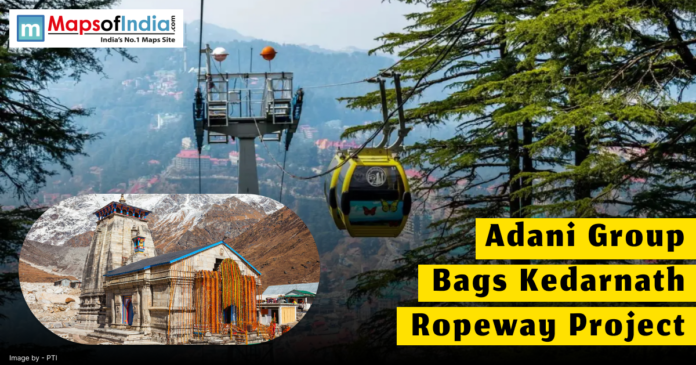The Adani company has won the bid to build a ropeway between Gaurikund and the holy Himalayan shrine, which means that the Kedarnath pilgrimage will undergo a massive change. The project is a 12.9-kilometre ambitious project, the approval of which was made in March this year, and is likely to require six years to be completed, one of the most important infrastructure projects in the religious tourism sector of Uttarakhand.
Currently, pilgrims arriving at Kedarnath walk a distance of 16 to 18 kilometres (16 km) starting from Gaurikund, which is not only very physically challenging but also quite dangerous (due to steep ascents and imperfect weather conditions, as well as the susceptibility of the area to landslides). The purpose of the next ropeway is to alleviate the situation with the goal of bringing the transportation time down to less than an hour. It will be the longest ropeway in the country and one of the longest ropeways in the world once it is completed, as it will provide pilgrims with a safer and more comfortable way of accessing the holy place.
The project should be a great boost to the Char Dham Yatra that attracts lakhs of pilgrims each year, both within the country and overseas. The ropeway will especially help the elderly devotees and those who cannot make the arduous journey due to their physical strength. The government feels that the development will not just be beneficial in terms of spiritual experience, but also play a key role in the local economy by providing employment and other tourism-related opportunities.
Although the project will be convenient and will bring growth, it is accompanied by some challenges. The development of a ropeway of this magnitude in a delicate ecosystem in the Himalayas is something that must be planned well and implemented with care. Possible ecological effects that may arise, such as deforestation, disturbance of habitat and strain on local resources, have already been raised by environmentalists. The company and officials will be pressured to make sure the construction process will be sustainable and will do minimal damage to the delicate environment.
The ropeway will also enhance the importance of Kedarnath as an important site in the Char Dham circuit, which also includes Yamunotri, Gangotri, and Badrinath. Since the Kedarnath shrine already received a record number of visitors over the past few years, the ropeway can be considered a progress towards infrastructure enhancement as per the increasing number of pilgrims.
With the project underway, both the devotees and the locals are optimistic that the project will have long-term positive impacts without affecting the natural balance in the region. By the year 2031, the Kedarnath ropeway would become a major milestone in modernizing infrastructure and rebranding the pilgrimage experience by integrating modern technology with ancient religion. The Kedarnath ropeway will become a landmark in the history of creating a new experience in the pilgrimage season.










